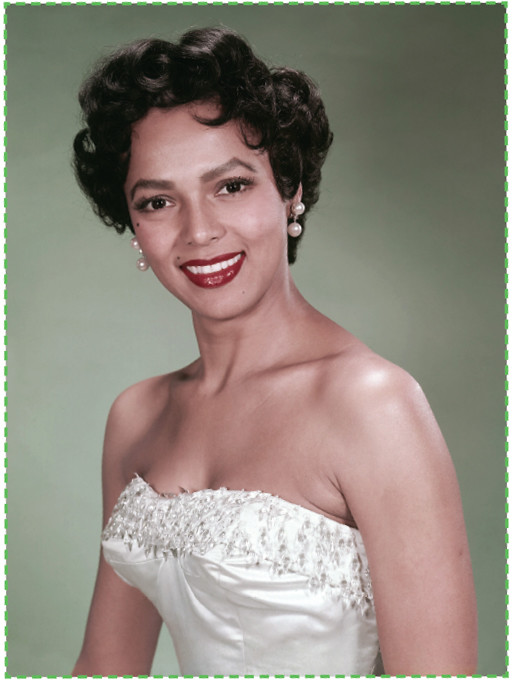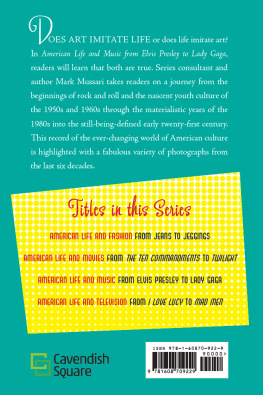
About this Book
Glamorous FASHION and ROCKIN FADs!
In the 1950s, women showcased their hourglass figures with cinched waists and full skirts. Their hair looked elegant and stylish in poodle cuts and bouffants. Men sported gray flannel suits and pompadours or ducktails. Greasers and beatniks rebelled against conventional society. The term teenager was coined and this particular group developed its own culture. Elvis Presley ruled the airwaves while Marilyn Monroe was queen of the silver screen. Read about the fashions, fads, pop culture icons, and world events of the 1950s!
About the Author
Felicia Lowenstein Niven is a professional freelance author who enjoys writing for young people. She has been published in many magazines and also has a teaching degree for grades K-8.

CONTENTS
Cover
About this Book
Title Page
Introduction: Wild and Crazy Fads
Save the Pants for Home
Go Sleeveless
Pull It All In
A Pretty Picture
Chapter 1: Hairstyles
Ponytails
Bouffant
Poodle Cut
The Pompadour and Ducktail
Chapter 2: Womens Styles and Fashion
Full of Fun!
One Style Fits All
Push Those Pedals
Beatnik Style
Ahead of Her Time
Blonde Bombshell
Going Glam
Chapter 3: Mens Styles and Fashion
The Man in the Gray Flannel Suit
No Better Sweater
Grease It Back
Not Just for Cowboys
Chapter 4: Accessories
The Height of Fashion
Saddle Up
For Eyes With Style
Heads Up!
Chapter 5: Fads and Trends
Talk About Teens!
Made in the Lab
A Touch of Spain
Furry Nice!
Chapter 6: Pop Culture
Its TV Time!
Rock Around the Clock
Lets Go to the Hop!
Get Ready to Hula!
Timeline
Glossary
Further Reading
Books
Internet Addresses
Index
Note to Our Readers
Copyright
More Books from Enslow
The 1950s
Introduction
Wild and Crazy Fads

Image Credit: Advertising Archive/courtesy Everett Collection
A 1950s ad for General Electric shows a family having a great time putting groceries away inside their brand-new, roomy refrigerator. The wife performs her chores in a dress and high heels, not exactly the right footwear for housework!
What do you want to be when you grow up? If you said a housewife, youd be like the girls in the 1950s. Back then, housework was the job of the woman while the man went to work.
If you think thats crazy, wait until you hear what women wore to do housework. Heres a hint: it wasnt exactly the most comfortable. If you guessed dresses, youre right! Of course, the dresses werent as fancy as the ones on television. Actresses who played housewives wore really full skirts and high heels!

Image Credit: Dover Publications, Inc./Sears
It was part of the feminine look. Fifties fashion focused on female curves. Tiny waists showed off full hips. Rows of petticoats created fuller skirts. By contrast, the pencil skirt showed natural curves.
Sheer blouses were especially popular with teenage girls. They wore lacy slips underneath, which were seen through the fabric.

Image Credit: courtesy Everett Collection
American actress Grace Kelly (19291982), who married the Prince of Monaco in 1956, wears an elegant fur stole. But you didnt have to be royalty or a celebrity to pull off this look!
These types of outfits worked for home and for school. They got even dressier for going out. Women dressed to entertain at home. They dressed for the theater. They even wore hats and gloves to look more polished.
By the end of the decade, women started dressing a little more casually. It seemed that men werent the only ones who wore the pants in the family!
Save the Pants for Home
You probably dont think twice about wearing jeans to school. But that would not happen in the 1950s. Girls wore skirts or dresses to school every day. They would save their pants to wear at home when they were just hanging around. They did not call them jeans, either. They were known as dungarees.
Womens pants had a notable difference from their male counterparts. They zipped on the side. It was considered more proper than zipping up the front.
Go Sleeveless
It didnt matter if it were summer or winter: women went sleeveless. Sleeveless dresses and blouses were comfortable because they allowed the shoulders to move freely. Women added stoles, or wraps, around their shoulders for casual and formal occasions. Stoles could be made of any material from the lightest chiffons to warm wool and even mink.

Image Credit: Dover Publications, Inc./Sears
An alternative to the bouncy full skirt was the slim pencil skirt. It hugged the hips instead of hiding them. Pencil skirts look hard to walk around in, but they had small slits in the front or a longer one in the back for freedom of movement.
Pull It All In
The latest fashions emphasized tiny waists. To help women with that, there were corsets. Corsets had stiff bones or hard plastic that squeezed the middle of the body. It was a relief to take them off at night.
But they did their job. In fact, they did it so well that theyand some of the dresses with built-in corsetscould stand up on their own.
A Pretty Picture
Picture a pencil. Its long and narrow, like one type of skirt that was popular in the 1950s. Thats why it was called a pencil skirt. The pencil skirt came down straight to the knees, hugging a womans body. Because its tight, many pencil skirts had a back slit or pleat to give women room to walk.
Chapter 1
Hairstyles

Image Credit: courtesy Everett Collection
Dorothy Dandridge (19221965), an American actress and singer, wore short, soft curls in 1954, a look that was both practical and glamorous.
By the 1950s, many women had given up their factory jobs. They also gave up the protective scarves that covered their heads. Now they had a chance to show off their hair! They cut and curled it. They slept in rollers. They got permanent waves. No one wanted long, straight hair. This was the time of soft and feminine hair. Women were ready to do anything they needed in order to get it.
There were no handheld blow-dryers, as we know them today. They were bulky models with hoses connected to plastic bonnets. Women also went to salons where they could sit under large domes that sent out hot air. Luckily, there were plenty of hair products on the market. These included home perms, curlers, hair spray, and gels. They allowed women to style their hair at home, often in their kitchens with funny-smelling chemicals!
Next page


















